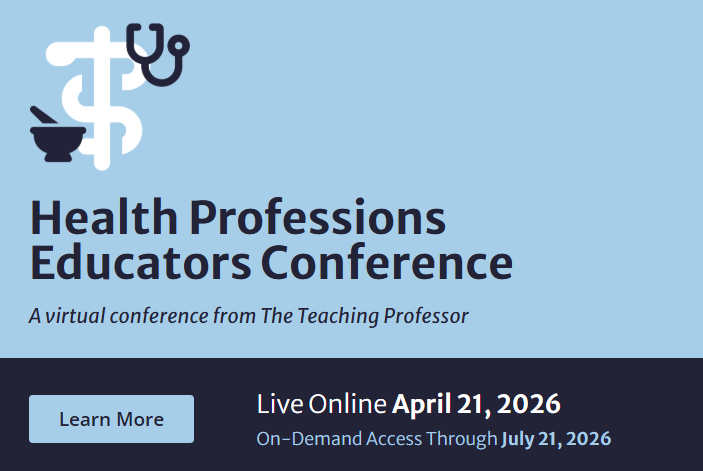There I was, standing in front of my face-to-face Introduction to Psychology class on a sunny Monday afternoon in spring 2024. I was watching as a few of my students took notes while the remaining students sat passively, perhaps hoping my animated gestures and pacing would somehow osmotically transfer my explanation of classical conditioning into their brains. Meanwhile, in my online section of the same course, students worked through carefully crafted modules at their own pace, their participation in discussion boards ebbing and flowing unpredictably. That’s when it hit me—despite years of teaching experience, I’m still searching for ways to spark the same level of engagement whether I’m interacting with students face-to-face or through carefully designed asynchronous activities. These parallel yet distinct teaching environments demand intentional strategies that can adapt while maintaining their power to actively engage students in the learning process.
Rethinking Active Learning for Asynchronous Spaces
Traditional active learning techniques that work beautifully in my face-to-face classes often fall flat in the asynchronous online environment. Take the classic “turn to your neighbor and discuss” prompt that energizes my traditional classes—there’s no direct equivalent when students are logging in at different times throughout the week. Yet simply abandoning these proven engagement strategies isn’t the answer. Instead, we need to reimagine active learning for both spaces, maintaining the core principles while adapting the execution. The key is finding techniques that preserve what makes active learning so powerful—student engagement, peer interaction, and immediate application of concepts—while acknowledging the unique constraints and opportunities of each learning environment.
One of the most powerful techniques in my traditional classroom is the think-pair-share discussion format. Students have those precious moments to gather their thoughts before turning to a classmate to discuss concepts like confirmation bias or the impact of classical conditioning on everyday behavior. The students are energized as pairs merge into small groups, building on each other’s insights before sharing with the whole class. But how do we capture that same collaborative energy in an asynchronous environment?
I’ve found success by structuring online discussions in three distinct phases that mirror the in-person experience. First, students post their initial response to a thought-provoking prompt (the “think” phase). Then, they must meaningfully respond to two classmates’ posts, building on their ideas rather than simply agreeing (the “pair” phase). Finally, students return to their original post and reflect on how their understanding has evolved after engaging with their peers’ perspectives (the “share” phase). The key is crafting prompts that demand critical thinking—instead of asking “What is classical conditioning?” I might ask “How would you use classical conditioning principles to help someone overcome their fear of public speaking?”
Timing matters, too. In my face-to-face class, I allow two to three minutes for individual reflection, five minutes for pair discussions, and 10 minutes for group sharing. Online, I’ve found success with a similar proportional structure: two days for initial posts, three days for peer responses, and two days for final reflections. This creates a rhythm that keeps the discussion moving while accommodating varied schedules.
Designing Collaborative Learning Experiences
Interactive content creation transforms how students engage with course material in both environments. In my traditional classes, I divide students into small groups to create concept maps exploring the relationships between different psychological disorders. Armed with markers and paper, they work collaboratively to connect concepts like anxiety, depression, and trauma responses, discovering links they might have missed studying alone. The energy is palpable as groups share their maps, debating connections and building on each other’s insights.
For my online students, I’ve adapted this activity using collaborative digital tools. Students work in small groups throughout the week to build their concept maps using shared online workspaces. Each student must add at least three concepts and make meaningful connections to their groupmates’ contributions. The asynchronous format actually offers an advantage here – students have time to think deeply about their contributions and can watch their group’s map evolve over several days. I provide specific deadlines for initial contributions and peer feedback to maintain momentum.
I have found that the key to success in either environment lies in providing clear examples of strong concept maps at the outset, establishing specific criteria for meaningful connections, and requiring students to explain their reasoning for each link they create. Deadlines for each phase keep the momentum going, while incorporating peer evaluation into the final grade ensures consistent participation. The resulting maps often reveal insights that surprise both me and my students, demonstrating how collaborative learning can deepen understanding regardless of the teaching modality.
Measuring Engagement and Refining Strategy
One-minute papers serve as powerful self-assessment tools in my traditional classes. For example, at the end of our discussion on memory formation, I ask students to quickly write down the most important concept they learned and one question they still have. This simple exercise reveals gaps in understanding and helps students consolidate their learning. In our next class, I address the most common questions, creating a feedback loop that keeps everyone engaged.
For my online students, I’ve transformed this into structured reflection journals. After completing each module, students must identify their key takeaway and pose one substantive question about the material. The asynchronous format allows for deeper reflection, and I’ve noticed online students often make fascinating connections to their personal experiences. Each week, I compile the most thought-provoking questions into a FAQ document, creating a collaborative resource that benefits the entire class.
Success in both formats require clear guidelines about what constitutes a meaningful reflection versus surface-level observations. Students stating that “the limbic system processes emotions” won’t suffice—they need to explain how this knowledge changes their understanding of human behavior. This approach not only reinforces learning but also develops critical thinking skills that serve students well beyond our course.
Measuring engagement across different learning environments requires that I use a systematic approach. In my traditional classroom, I track participation through observation and collect quick feedback via index cards. For my online students, I monitor not just the frequency but the quality of their discussion posts and collaborative work. The key metrics that I use remain consistent across both spaces: depth of analysis, peer interaction quality, and concept application.
I use a simple framework that examines three elements: initial engagement (participation in discussions or activities), sustained interaction (meaningful responses to peers), and learning application (connecting concepts to real-world scenarios). For each component, I look for evidence of critical thinking rather than mere completion. This approach helps identify which strategies are working and which need adjustment.
Beyond quantitative measures, I pay attention to qualitative indicators like the sophistication of student questions and the complexity of peer-to-peer discussions. These insights guide my refinement of teaching strategies in both environments, ensuring that active learning remains effective regardless of delivery method.
As the spring semester progressed, I saw the impact of the adapted strategies in both my traditional and online psychology classes. Those initially passive students in my traditional class began to engage in our active learning exercises, while my online students built an active learning community through their thoughtful asynchronous interactions. In my experience, the key isn’t choosing between traditional and online teaching methods—it’s understanding how to preserve active learning while adapting strategies to fit each unique environment. By reimagining rather than simply transplanting these strategies, we can create engaging learning experiences that work effectively across both spaces.
Dr. Dunja “Dee” Trunk, a professor of psychology at Bloomfield College of Montclair State University, has a passion for teaching and a genuine belief in the transformative power of education.






